-
 Bitcoin
Bitcoin $117600
0.25% -
 Ethereum
Ethereum $4424
0.10% -
 XRP
XRP $3.101
0.50% -
 Tether USDt
Tether USDt $1.001
-0.01% -
 BNB
BNB $836.2
1.26% -
 Solana
Solana $188.8
2.11% -
 USDC
USDC $1.000
0.01% -
 Dogecoin
Dogecoin $0.2301
0.57% -
 TRON
TRON $0.3485
-1.00% -
 Cardano
Cardano $0.9209
-1.34% -
 Hyperliquid
Hyperliquid $46.72
-1.19% -
 Chainlink
Chainlink $22.62
4.84% -
 Stellar
Stellar $0.4275
-0.38% -
 Sui
Sui $3.761
1.91% -
 Bitcoin Cash
Bitcoin Cash $586.7
-0.25% -
 Ethena USDe
Ethena USDe $1.001
0.01% -
 Hedera
Hedera $0.2510
2.06% -
 Avalanche
Avalanche $24.21
2.22% -
 Litecoin
Litecoin $119.7
1.07% -
 Toncoin
Toncoin $3.450
1.06% -
 UNUS SED LEO
UNUS SED LEO $9.411
-0.93% -
 Shiba Inu
Shiba Inu $0.00001298
1.20% -
 Uniswap
Uniswap $10.98
3.25% -
 Polkadot
Polkadot $3.961
2.16% -
 Dai
Dai $1.000
0.00% -
 Bitget Token
Bitget Token $4.642
0.95% -
 Cronos
Cronos $0.1514
0.57% -
 Ethena
Ethena $0.7290
3.78% -
 Monero
Monero $254.1
7.69% -
 Pepe
Pepe $0.00001102
2.47%
Will NFT disappear? Explore long-term preservation solutions for digital assets
NFTs pose preservation challenges due to their digital nature, but strategies like decentralized storage and regular backups can ensure their longevity.
May 09, 2025 at 12:01 am
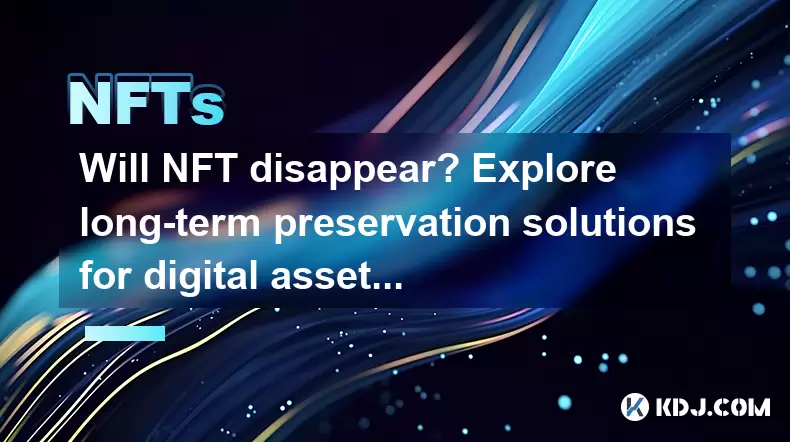
The rise of Non-Fungible Tokens (NFTs) has brought a new wave of interest in digital ownership and collectibles. However, as with any emerging technology, concerns about their longevity and preservation have surfaced. Will NFTs disappear? This question is pivotal for collectors, investors, and creators alike. To address this, we must explore long-term preservation solutions for these digital assets, ensuring they remain accessible and valuable for future generations.
Understanding NFTs and Their Challenges
NFTs are unique digital assets stored on a blockchain, often representing art, music, or other collectibles. Their uniqueness and ownership are secured through cryptographic means, making them theoretically permanent. However, the digital nature of NFTs poses challenges for long-term preservation. Unlike physical assets, digital files can be lost, corrupted, or become obsolete due to technological advancements. Additionally, the reliance on specific blockchains and platforms can jeopardize the accessibility of NFTs if those platforms cease to exist.
The Role of Blockchain in NFT Preservation
Blockchain technology is the backbone of NFTs, providing a decentralized and tamper-proof ledger of ownership. To ensure the longevity of NFTs, it is crucial to maintain and upgrade blockchain networks. This involves regular updates to the underlying protocols to prevent obsolescence and enhance security. Moreover, the decentralization of blockchains means that no single entity controls the network, reducing the risk of data loss or manipulation. However, even with these safeguards, the data stored on blockchains must be accessible and interpretable by future technologies.
Strategies for Storing and Backing Up NFTs
To mitigate the risk of losing NFTs, collectors and creators must adopt robust storage and backup strategies. Here are some key steps to consider:
- Use decentralized storage solutions: Platforms like IPFS (InterPlanetary File System) allow files to be stored across a network of nodes, reducing the risk of data loss.
- Regularly back up your NFTs: Store copies of your NFTs on multiple devices and platforms to ensure redundancy.
- Utilize cold storage: For added security, consider storing your NFTs on offline devices, such as hardware wallets, which are less susceptible to hacking.
- Document your NFTs: Keep detailed records of your NFTs, including metadata and ownership details, to facilitate future recovery and verification.
The Importance of Metadata and Standards
Metadata plays a crucial role in the preservation of NFTs. It provides essential information about the asset, such as its creator, creation date, and provenance. Standardizing metadata formats can help ensure that NFTs remain interpretable and valuable over time. Organizations like the W3C (World Wide Web Consortium) are working on standards for digital assets, which could benefit the NFT ecosystem. By adhering to these standards, creators and collectors can enhance the longevity and interoperability of their NFTs.
Legal and Regulatory Considerations
The legal and regulatory landscape surrounding NFTs is still evolving. Ensuring the long-term preservation of NFTs requires addressing legal ownership and intellectual property rights. Clear legal frameworks can help protect the rights of creators and collectors, ensuring that NFTs remain valid and enforceable. Additionally, regulations can encourage the development of preservation technologies and practices, fostering a more sustainable NFT ecosystem.
Technological Innovations for NFT Preservation
As technology advances, new solutions for preserving NFTs are emerging. Some of these innovations include:
- Digital archives and museums: Institutions dedicated to preserving digital art and culture can play a vital role in safeguarding NFTs. These archives can provide secure storage and curatorial expertise to ensure the longevity of digital assets.
- AI and machine learning: These technologies can be used to monitor and maintain NFTs, detecting and repairing any data corruption or loss. AI can also help in the interpretation and presentation of NFTs to future audiences.
- Interoperability protocols: Developing protocols that allow NFTs to be transferred and accessed across different blockchains and platforms can enhance their resilience and accessibility.
Community and Collaborative Efforts
The preservation of NFTs is not solely a technical challenge; it also requires community and collaborative efforts. Engaging with the NFT community can foster best practices and shared resources for preservation. Platforms and marketplaces can implement features that encourage users to back up and document their NFTs. Additionally, collaborations between artists, technologists, and preservationists can lead to innovative solutions that address the unique challenges of digital assets.
Educational Initiatives and Awareness
Raising awareness about the importance of NFT preservation is crucial. Educational initiatives can help collectors and creators understand the risks and best practices for preserving their digital assets. Workshops, webinars, and online resources can provide valuable information on storage, backup, and legal considerations. By empowering the community with knowledge, we can enhance the overall resilience of the NFT ecosystem.
Frequently Asked Questions
Q: Can NFTs be transferred to different blockchains for better preservation?
A: Yes, some projects are working on interoperability protocols that allow NFTs to be transferred between different blockchains. This can enhance their preservation by reducing reliance on a single platform. However, the process can be complex and may require technical expertise.
Q: How can I verify the authenticity of an NFT over time?
A: The authenticity of an NFT can be verified through its unique token ID and the blockchain's immutable ledger. Keeping detailed records of your NFTs, including metadata and ownership history, can also help in verifying their authenticity in the future.
Q: Are there any insurance options available for NFTs?
A: Yes, some insurance companies are beginning to offer policies that cover digital assets, including NFTs. These policies can protect against loss, theft, or damage, providing an additional layer of security for collectors.
Q: What role do NFT marketplaces play in preservation?
A: NFT marketplaces can play a significant role in preservation by implementing features that encourage users to back up and document their NFTs. They can also provide educational resources and support for best practices in NFT preservation.
Disclaimer:info@kdj.com
The information provided is not trading advice. kdj.com does not assume any responsibility for any investments made based on the information provided in this article. Cryptocurrencies are highly volatile and it is highly recommended that you invest with caution after thorough research!
If you believe that the content used on this website infringes your copyright, please contact us immediately (info@kdj.com) and we will delete it promptly.
- Kazakhstan's Crypto Leap: Bitcoin ETF and Central Asia's Digital Finance Future
- 2025-08-13 12:45:19
- BlockDAG Presale Blazes Past $371M: Fundraising Frenzy Fuels Crypto Sensation
- 2025-08-13 13:05:21
- Meme Coins: Chasing the 2025 Surge – Which Will Moonshot?
- 2025-08-13 10:25:23
- Bitcoin's Wild Ride: Rally, Pullback, and What's Next
- 2025-08-13 10:25:23
- Bitcoin, Bitmax, and Institutional Demand: A New Era of Crypto Investment
- 2025-08-13 10:45:12
- Solana, ROAM, and Airdrops: What's the Buzz in 2025?
- 2025-08-13 11:35:13
Related knowledge
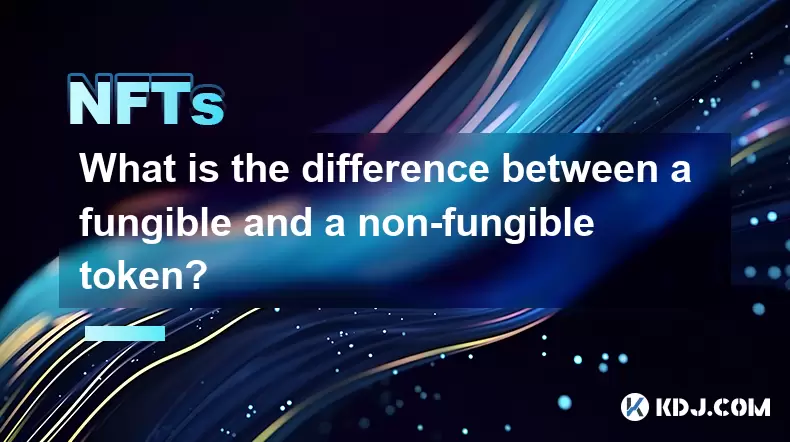
What is the difference between a fungible and a non-fungible token?
Aug 11,2025 at 12:07pm
Understanding Fungibility in Digital AssetsThe concept of fungibility is foundational to understanding both fungible and non-fungible tokens (NFTs) in...
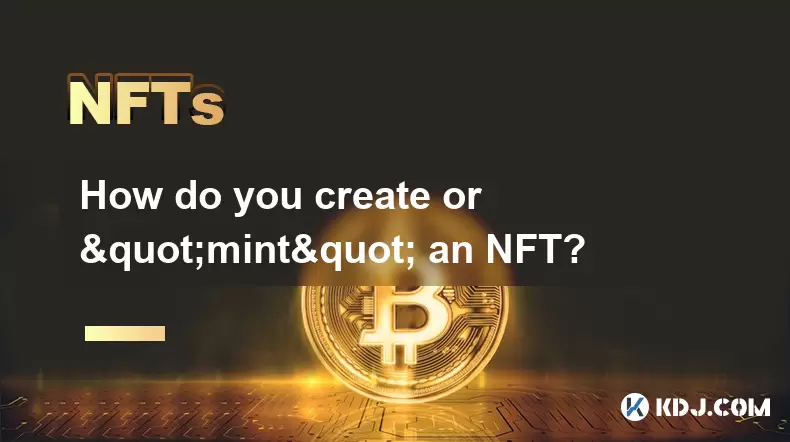
How do you create or "mint" an NFT?
Aug 09,2025 at 08:56pm
Understanding What an NFT Is Before MintingBefore diving into the process of creating an NFT, it's essential to understand what an NFT actually is. An...
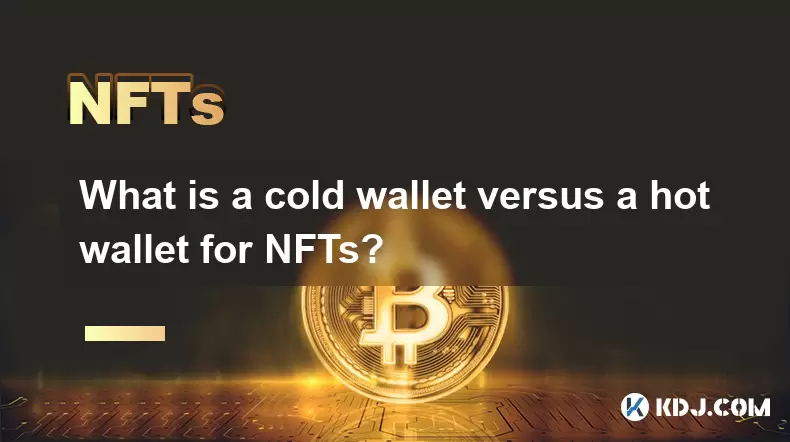
What is a cold wallet versus a hot wallet for NFTs?
Aug 10,2025 at 10:49pm
Understanding Cold Wallets and Hot Wallets in the NFT EcosystemIn the world of NFTs (Non-Fungible Tokens), digital ownership and security are paramoun...

How do I protect my NFTs from being stolen?
Aug 11,2025 at 06:28pm
Understanding the Risks to NFT OwnershipNFTs, or non-fungible tokens, represent unique digital assets secured on blockchain networks. Despite their cr...
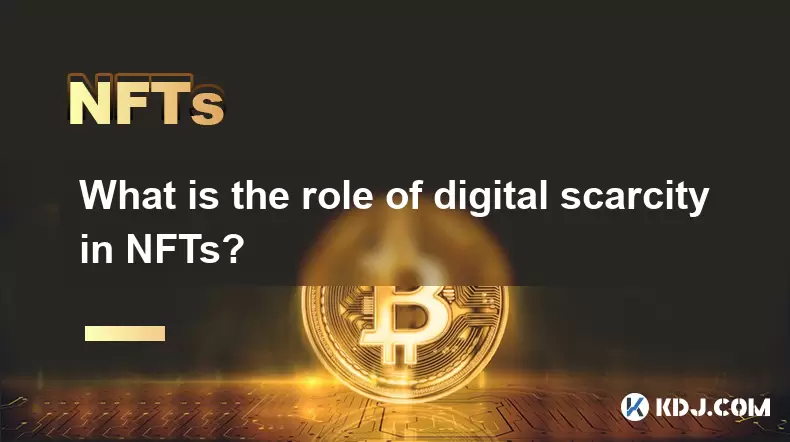
What is the role of digital scarcity in NFTs?
Aug 11,2025 at 11:36pm
Understanding Digital Scarcity in the Context of NFTsDigital scarcity refers to the deliberate limitation of digital assets to create value through ra...
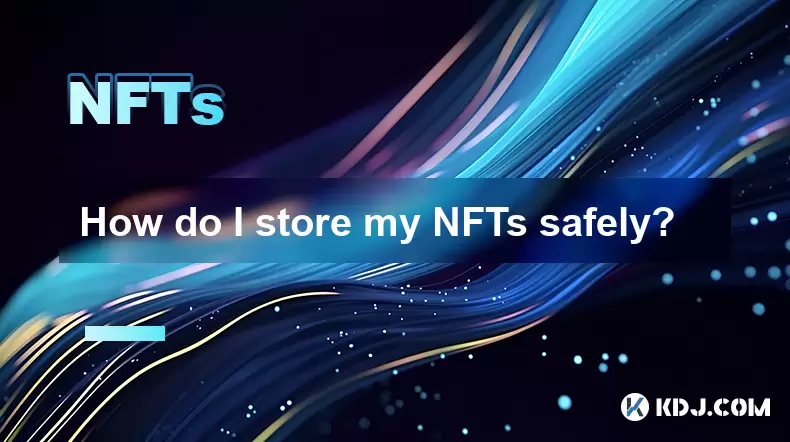
How do I store my NFTs safely?
Aug 13,2025 at 11:36am
Understanding the Nature of NFT OwnershipWhen you purchase an NFT (Non-Fungible Token), you are not storing a file like a photo or video directly on y...

What is the difference between a fungible and a non-fungible token?
Aug 11,2025 at 12:07pm
Understanding Fungibility in Digital AssetsThe concept of fungibility is foundational to understanding both fungible and non-fungible tokens (NFTs) in...

How do you create or "mint" an NFT?
Aug 09,2025 at 08:56pm
Understanding What an NFT Is Before MintingBefore diving into the process of creating an NFT, it's essential to understand what an NFT actually is. An...

What is a cold wallet versus a hot wallet for NFTs?
Aug 10,2025 at 10:49pm
Understanding Cold Wallets and Hot Wallets in the NFT EcosystemIn the world of NFTs (Non-Fungible Tokens), digital ownership and security are paramoun...

How do I protect my NFTs from being stolen?
Aug 11,2025 at 06:28pm
Understanding the Risks to NFT OwnershipNFTs, or non-fungible tokens, represent unique digital assets secured on blockchain networks. Despite their cr...

What is the role of digital scarcity in NFTs?
Aug 11,2025 at 11:36pm
Understanding Digital Scarcity in the Context of NFTsDigital scarcity refers to the deliberate limitation of digital assets to create value through ra...

How do I store my NFTs safely?
Aug 13,2025 at 11:36am
Understanding the Nature of NFT OwnershipWhen you purchase an NFT (Non-Fungible Token), you are not storing a file like a photo or video directly on y...
See all articles

























































































